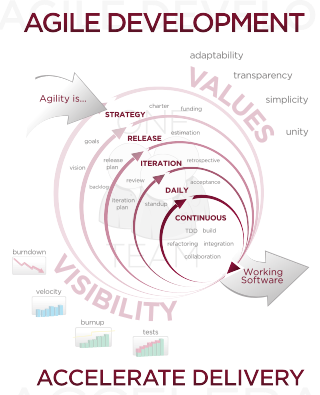This past weekend ProductCamp Austin held their 10th event. It is the first ProductCamp globally to hold 10 events, and I was very excited to be able to a part of it. For those of you who have never attended such an event, you are probably wondering “What is ProductCamp?” ProductCamp is a nonprofit organization that serves Product Management, Product Marketing, and Marketing professionals with an opportunity to teach to, learn from, and network with each other. ProductCamp is a un-conference, meaning that it is FREE for anyone who wishes to attend! While your nonprofit may not have a product to sell, you do have a cause that needs donors to buy into your mission and support your organization. Product camp is a great source of inspiration for innovation, marketing, service delivery etc.
I was excited to attend the event to get inspiration and wonderful new ideas. Over the course of the day, I saw several presentations ranging from “how to tell your story” to “how to segment your customer base to better suit their needs”. I got to thinking how some of these lessons could really benefit Sage Nonprofit customers who are looking to market their cause in a competitive environment. There are three key lessons from ProductCamp that could benefit you and your organization:
1. Create and communicate an overarching strategy.
Day and day out I am sure you have a million ideas and programs that run through your mind. It is also easy to sit in meetings when ideas are being thrown across the table, which can lead to each person in the organization running in different directions. When it comes to communicating to potential donors about your organization, make sure you have a clear concise message.
You want your donors to know what your end mission is and what you are trying to accomplish, so they know what they are supporting.
This clear message will make it seem like you have a clear focus on your mission and that their money will be going to an organization that is making a true impact.
2. Tell a compelling story about your cause or nonprofit.
There is a lot of communication out there around how to position your organization or product to look better than everyone else out there.
I heard a great session from a gentleman named Mike Boudreaux who discussed how to tell a compelling story. Mike’s points were backed up from this great video from Scott Sinek. Both of these speakers talk about why companies like Apple tell such a better story than everyone else. What Apple does is use “why” to differentiate themselves in the market. Apple is a great product because they challenge the status quo. They don’t throw their product in the face of the customers, they throw their mission. This is a great lesson for nonprofit organizations, who are looking to share their mission. Not only will it cause your donors to feel more connected to you, it can create a movement that makes them want to be a part of your organization. Making that connection will not only lead to people donating to your cause once, but also keep them coming back.
3. Know your ideal donor and what is going on in their lives.
One of the sessions I listened to was from a woman by the name of Becky Trevino who discussed the importance of properly segmenting customers. In the marketing world, it is important to understand, exactly who to reach in order to grow the organization. Not only is it important to understand who that person is, but also to understand what is going on in their lives. The more information you can collect on your donors, the easier it will be to identify how your donors will respond to the messages you are sending them. For example, if you are targeting donors between the ages of 25-50 who love animals, think about how these donors find out about your organization. Is it online via social media, are they watching your advertisements on TV? Also, how do these people want to donate? Are they living on their mobile phone or maybe they want to mail a check. You can make the greatest impression on your donors by integrating the donation process into their day to day life.
Want to attend a Product Camp? Visit http://www.productcamp.org/ to find one near you.
 Brooke Grimes
Brooke Grimes
Associate Product Marketing Manager
Sage Nonprofit Solutions

